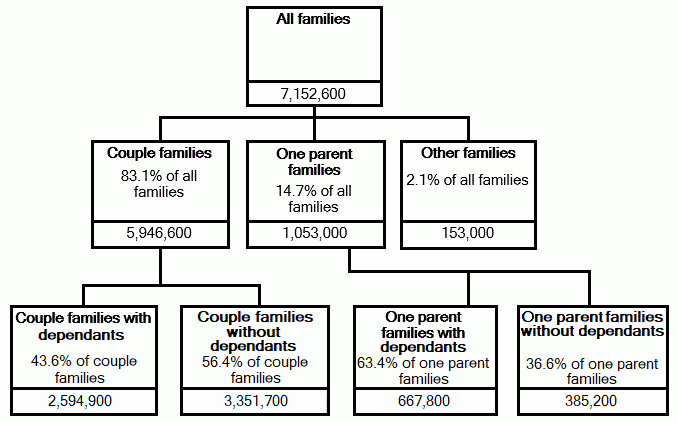- Rise in both parents working full-time - 21% of couple families with children aged 0-4 years.
- Rise in families with employed mothers - 70% of couple families with children under 15.
- Fall in families with just one employed parent - 28% of couple families with children under 15.
- Rise in one parent families - 15% of all families.
- Fall in jobless families - 11% of families with children under 15.
- Rise in same-sex couples - 1% of all families.
All families
In June 2019 there were 7.2 million families, an increase of 1.1 million (18%) since 2009. Of these:
- 5.9 million (83%) were couple families.
- 1.1 million (15%) were one parent families with 83% of these being single mothers.
- 153,000 (2%) were classified as 'other families', where at least two people were related in some way other than as a couple or as a parent and child (such as adult-age siblings). (Table 1)
3.3 million (46%) were families with dependants, of which 82% were families with children under 15.
The following flowchart summarises the breakdown of the main family types.
Image
